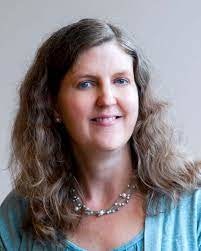Young Americans know that the country is in trouble.
A December poll of 18-29-year-olds conducted by Harvard’s Kennedy School of Government found that over half of young people believe that American democracy is under threat. But youth voter turnout rates remain stubbornly low, typically under 50%. And participation by African Americans and Hispanics is lower still.
But whether or not a young person is civically engaged is shaped long before they get the right to vote. And K-12 civics education has long been in decline, de-emphasized in favor of reading, math, and science. However, a newly-released report from Educating for American Democracy (EAD) and the Educational Testing Service (ETS) is shining a light on how K-12 civic learning can be promoted and monitored.
EAD and ETS use a holistic definition of civic learning that goes beyond what a student might learn in a high school government class. It includes the skills necessary to engage in the democratic process, such as critical thinking, research, and media literacy. And it encompasses the attitudes that underlie civic engagement, like a sense of duty, concern for others, and a feeling of agency.
The report argues that civic education need not be restricted to the social studies classroom. Many different classes, including English and math, can include civics-related material and promote civics skills like information literacy and perspective-taking. And thoughtfully run extra-curricular activities like student elections and service learning can foster civic participation as well. Shifts towards emphasizing civics in these ways are already occurring. Dr. Laura Hamilton
Dr. Laura Hamilton
“There’s growing availability of resources, curriculum, professional development, and so forth to promote civic learning, broadly defined,” said Dr. Laura Hamilton, associate vice president of ETS’s Research Centers and the author of the report. “But we don’t currently have a lot of resources to monitor it.”
According to the report, the only nation-wide standardized assessment of civic outcomes is the National Assessment of Educational Progress, which is given to eighth graders only in certain years. And standardized tests like the GRE and TOEFL are the ETS’s specialty. But civic learning, especially when defined as broadly as EAD and the ETS do, can be tricky to measure. The report suggests some innovative possibilities.
One solution might involve the use of scenario-based digital tasks, which would resemble video games. A student, represented by an avatar, might have to go door-to-door in a digital environment, explaining an issue and persuading other characters to sign a petition.
However, standardized assessments of civic learning come with complexities that tests of math and science do not. Standardized tests have often been accused of racial bias, and the civic attitudes and participation levels of different American groups are the result of complicated histories that have resulted in mistrust and cynicism.
Crystal Awuzie, a communications associate for Black Girls Vote, a non-profit dedicated to the civic empowerment of African-American women, saw cause for concern.
“It’s incredibly possible for one of these assessments to have negative effects on marginalized communities,” said Amuzie. “What measures are in place to ensure these assessments are not culturally biased?”
However, Kelly Siegel-Stechler, a senior researcher at the Center for Information & Research on Civic Learning and Engagement at Tufts University, thinks that the format may provide for more cultural fairness.
“Compared to an assessment that might have a more closed correct answer, I think there’s more room to do the work in advance of making sure that it’s more equitable and culturally responsive,” said Siegel-Stechler. “If you’re giving students a scenario that’s presented to them for the first time, you have a chance to think about what the background knowledge is that’s required and to try and level that playing field in a way that makes sense for students.”
Even if the assessments are valid and fair, ETS doesn’t imagine them becoming the sort of nationally mandated high-stakes tests that have become controversial.
“The digital tasks are better suited for a classroom assessment,” said Hamilton. “It would be used just as a way to gauge student progress within the classroom. We’re not at a point where it would be feasible from a technology perspective, and acceptance of this politically to do it on a large scale.”
The political acceptance that Hamilton mentions is sure to pose another obstacle. Although a greater emphasis on civic learning in grades K-12 might help cool America’s polarization, that very polarization might make implementing it impossible. The report suggests focusing on how the underlying skills of civic learning can improve student success in the long-term as well as job readiness.
ETS hopes to publish results from its research into civics assessments within the next year. Although large-scale changes in civic education are probably still far off, Siegel-Stechler sees a reason for optimism.
“The things we assess tend to focus where we drive our efforts and spending in schools,” she said. “I think the hope is that by putting civics in a broader assessment framework, it will get the attention and care that it deserves from the education community.”


















